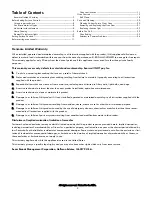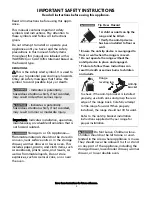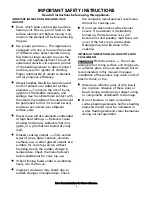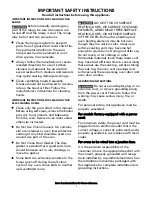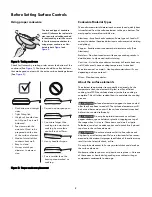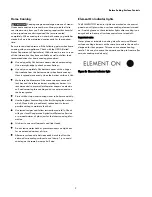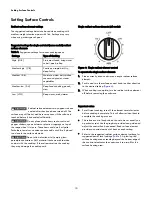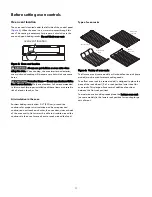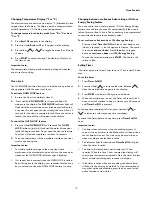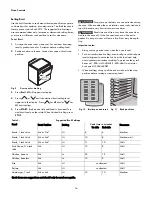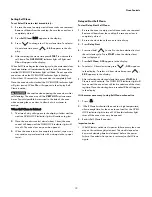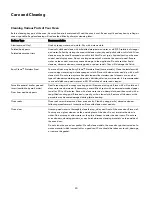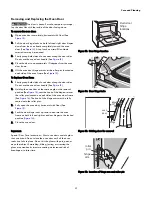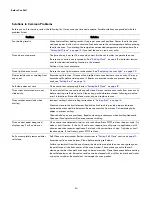
9
Before Setting Surface Controls
Home Canning
Canning can generate large amounts of steam.
Use extreme caution to prevent burns. Always raise the lid to
vent steam away from you. Safe canning requires that harmful
micro-organisms are destroyed and the jars are sealed
completely. When canning in a water bath canner, a gentle but
steady boil must be maintained continuously for the required
time.
Be sure to read and observe all the following points when home
canning with your appliance. Check with the USDA (United
States Department of Agriculture) Web site and be sure to read
all the information they have available as well as follow their
recommendations for home canning procedures.
•
Use only quality flat bottom canners when home canning.
Use a straight-edge to check canner bottom.
•
Use only a completely flat bottom canner with no ridges
that radiate from the bottom center when home canning.
Heat is spread more evenly when the bottom surface is flat.
•
Make sure the diameter of the canner does not exceed 1
inch beyond the surface element markings or burner. It is
recommended to use smaller diameter canners on electric
coil and ceramic glass cooktops and to center canners on
the burner grates.
•
Start with hot tap water to bring water to boil more quickly.
•
Use the highest heat seating when first bringing the water to
a boil. Once boiling is achieved, reduce heat to lowest
possible setting to maintain that boil.
•
Use tested recipes and follow instructions carefully. Check
with your local Cooperative Agricultural Extension Service
or a manufacturer of glass jars for the latest canning infor-
mation.
•
It is best to can small amounts and light loads.
•
Do not leave water bath or pressure canners on high heat
for an extended amount of time.
•
Alternate surface units between each batch to allow the
units and surrounding surfaces to cool down. Try to avoid
canning on the same burner unit all day.
Element On indicator lights
The ELEMENT ON indicator lights are marked on the control
panel and will glow when a surface cooking element is turned
on. A quick glance at these indicator lights after cooking is an
easy check to be sure all surface controls are turned off.
Important note:
Never place or straddle a cooking utensil over two different
surface cooking elements at the same time unless the utensil is
designed for that purpose. This can cause uneven heating
results. This can also cause the ceramic cooktop to fracture (for
ceramic cooktop models only).
Figure 3: Element indicator light


